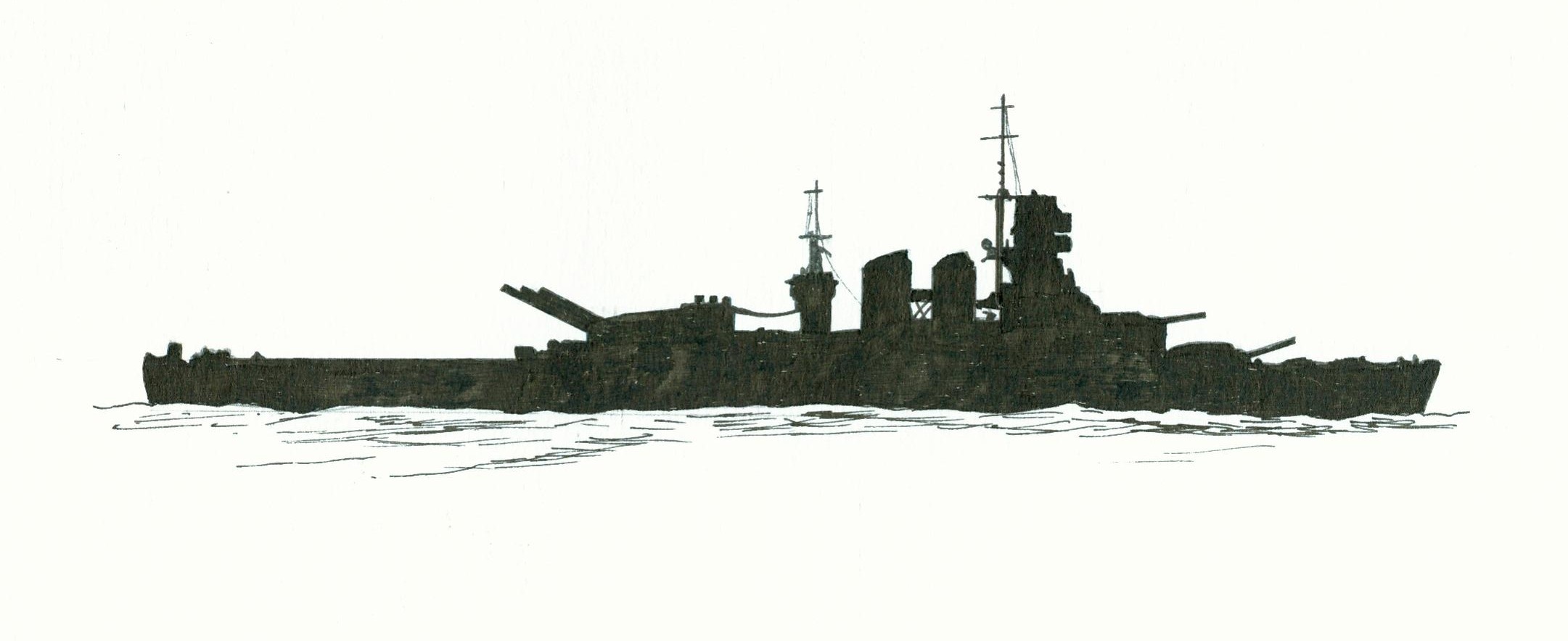Dunkerque
Richelieu-class
Roma of the Italian Vittorio Veneto-class
Richelieu-class consisting of the Richelieu, Gascogne, Jean Bart and Clemenceau, preceded by the Dunkerque-class and succeeded by the never realized Alsace-class. Designed as an answer on the Italian Vittorio Veneto-class battleships (1) while Italy and not Germany was the main threat for France regarded the supremacy in the Mediterranean. As a result of building under different programs were the hip not entirely similar.
Laid down at the Brest Navy Yard, France on 22 October 1935, launched in the Salou no. 4 graving dock on 17 January 1939, bow and stern parts were with the hull assembled in the Laninon dock no. 9, trials in April 1940, commissioned in June 1940, part of the forces of Vichy France, attacked by British Royal Air Force while lying at Dakar, Senegal - afraid she would fell in German hands, on 8 July 1940, involved in the Battle of Dakar against Free French and British forces between 23-25 September 1940, departed for the USA on 30 January 1943, at the Brooklyn Navy Yard overhauled and repaired, commissioned in October 1943, accommodation ship at Brest since 21 May 1956, laid up in reserve in 1958, condemned in 16 January 1968, renamed Q432 and breaking up at Cantieru Navali Santa Maria, Genoa, Italy started in September 1968.
General technical specification of the class. Displacement 35.000 (design standard)-48.950 tons and as dimensions 247,85 x 33 x 9,63 metres or 813.2 x 108 x 31.6 feet.
Machinery consisted of 4 Parsons geared turbines and 6 Indret Sural fuel oil pressure-fired steam boilers supplying 150.000 (design)-175.000 (trials) shp and driving four 4-bladed screws allowing a speed of 30 (design)-32,6 (trials) knots. Range varied between 2.350-6,950 nautical miles with a speed of respectively 28 and 16 knots. Crew numbered 1.550 planned while used as flagship, in 1956 actually 1.280 men. Armour consisted of a 33cm/13.0” thick belt, an upper armoured deck of 15cm/5.9” and a lower armoured deck of 4cm/1.6” and with the main gun turrets and conning tower protected by respectively 14cm/5.5-43cm/17” and 26cm/10.2”. The original armament consisted of 3 Loire 130 sea planes for which a hangar, a crane en 2 catapults were available, 2x4-38cm/15.0” /45 Modèle 1935 guns in super firing positions, 3x3-15,2cm/6.0” dual purpose Modèle 1936 guns and 6x2-10cm/3.9” anti aircraft guns. Before her modernisation in the USA in 1943 were 3,7cm anti aircraft guns and 13,2mm Hotchkiss machineguns added. After the modernisation were 14x4-4cm/1.57” anti aircraft Bofors guns and 48-2cm anti aircraft Oerlikons avaible.
Note
1. Littorio-class or Vittorio Veneto-class consisted of the Littorio, Vittoio Veneto, Roma and Impero.



